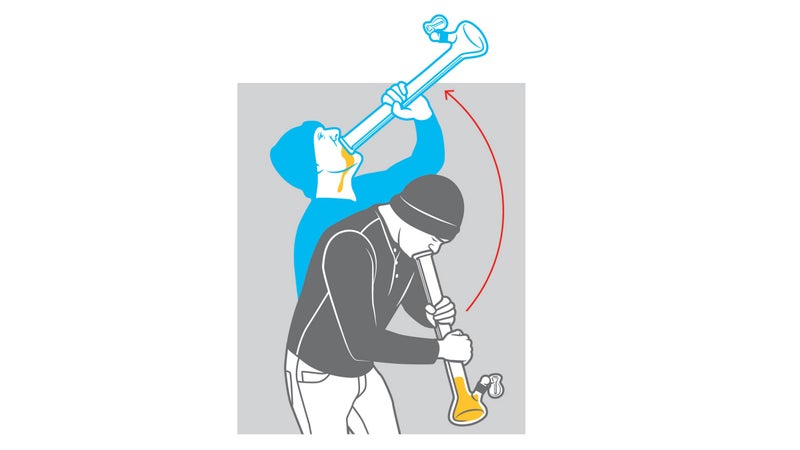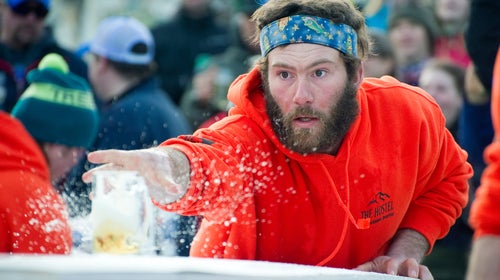In late winter, skiers and snowboarders will descend on Wyoming’s Jackson Hole Mountain Resort to compete in the ninth annual Gelande Quaff World Championship, in which teams of four slide mugs of Pabst Blue Ribbon down a ten-foot slab of melamine, catch them midair, and slam them while spilling as little as possible.
Legend has it that the activity, locally referred to as “quaffing,” dates back to 1986, when a storm closed the tram and a handful of locals were knocking back beers at a now defunct bar that slid suds-filled mugs to patrons. (The “Gelande” part is derived from the German word for ski jumping.) When one almost got away, a skier grabbed it midair and drained it. Thirty years on, the contest, formalized in 2008, has become the epitome of après. “Gelande quaffing—there is none more awesome,” says Benny Wilson, cofounder of the Jackson Hole Air Force, a group of brazen hometown heroes who led the charge to open up Jackson’s lift-served backcountry in 1999. “It’s the greatest drinking game on earth.”
Teams of four (you must qualify at a regional event) rotate around the table in an attempt to drink as much as is humanly possible in 60 seconds. Drinkers must stand two feet beyond the table. One point is awarded for nabbing the stein and downing it, two for doing so via the handle; the team with the most points at the end of the round advances. As the competition continues, increasingly advanced moves are required. The final round is two minutes long, and teams must complete a handle catch, a spin catch, and an under-the-leg catch. A freestyle catch (see below) is worth up to five points, awarded at the judges’ discretion.
Last year’s winners, Quaffstafari, a Boulder, Colorado, team of four dudes in red, gold, and green tracksuits, went so far as to enlist a coach. Jade Lascelles, a former dancer and choreographer, measured which combinations of pitcher and catcher were most effective. Then she had them consume more than a keg of beer over two five-hour practices each week, during which they developed double-black-diamond tolerance. “It’s important that the whole team can handle their beers, both in terms of intoxication and volume,” says Lascelles.
But it was their freestyle ability that really set the Quaffstafarians apart. “We developed a choreographed trick round that allowed us to use props and equipment in a time-efficient way,” says Lascelles.
So You Think You Can Quaff?
A taxonomic guide to the kinds of maneuvers witnessed in the freestyle round
The Bromance: Two teammates catch one beer each, lock arms, and drink.

The Helping Hand: The catcher pokes his arm through his fly, nabs the beer, and pours it into a teammate’s mouth.

The Smokestack: Contestants take a hit from a suds- filled bong, chug the beer, and blow out the smoke.

The Magnum Opus : Three beers are slid. Instead of drinking them, quaffers spit them into a jug and slide it back for the pitcher to chug.


